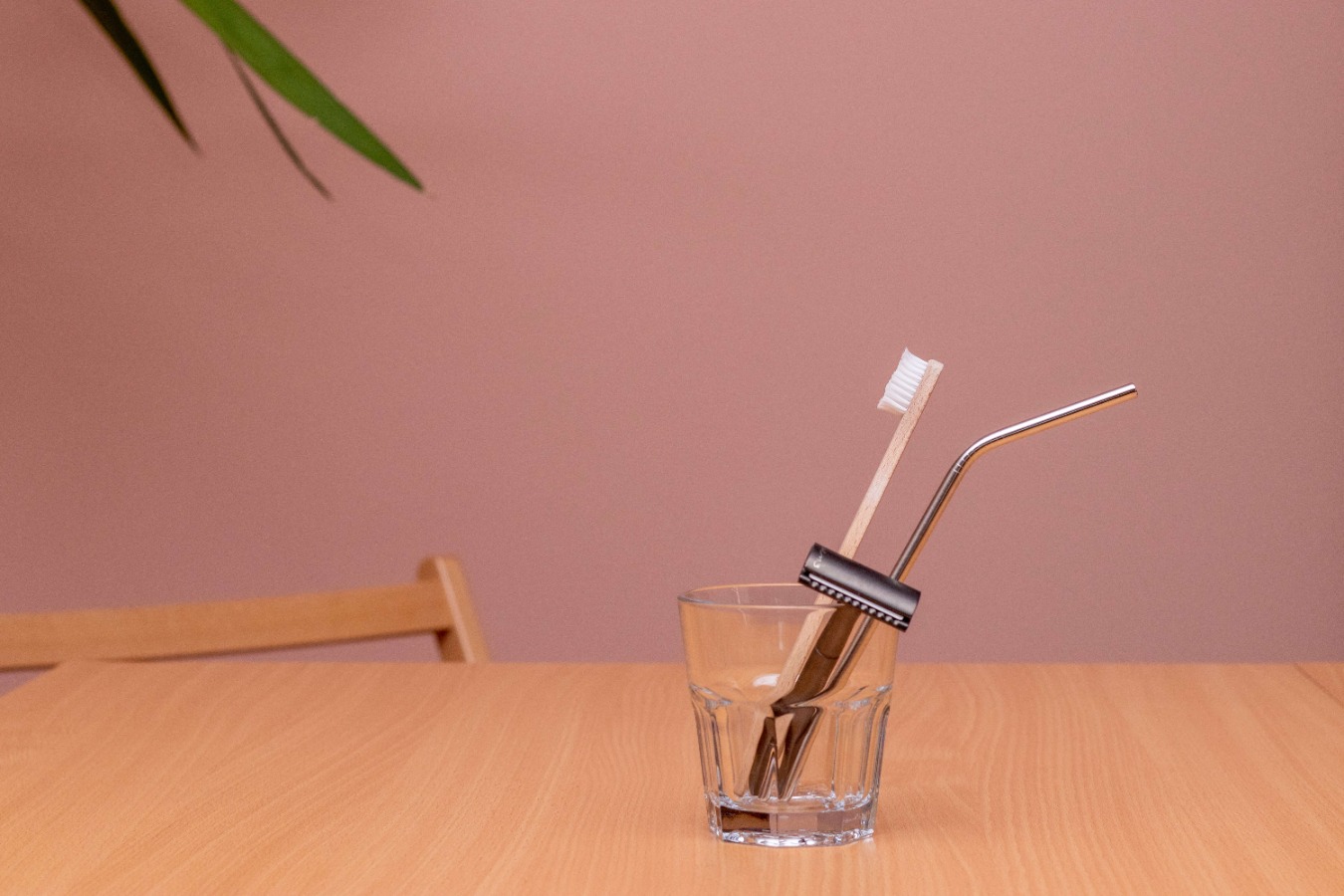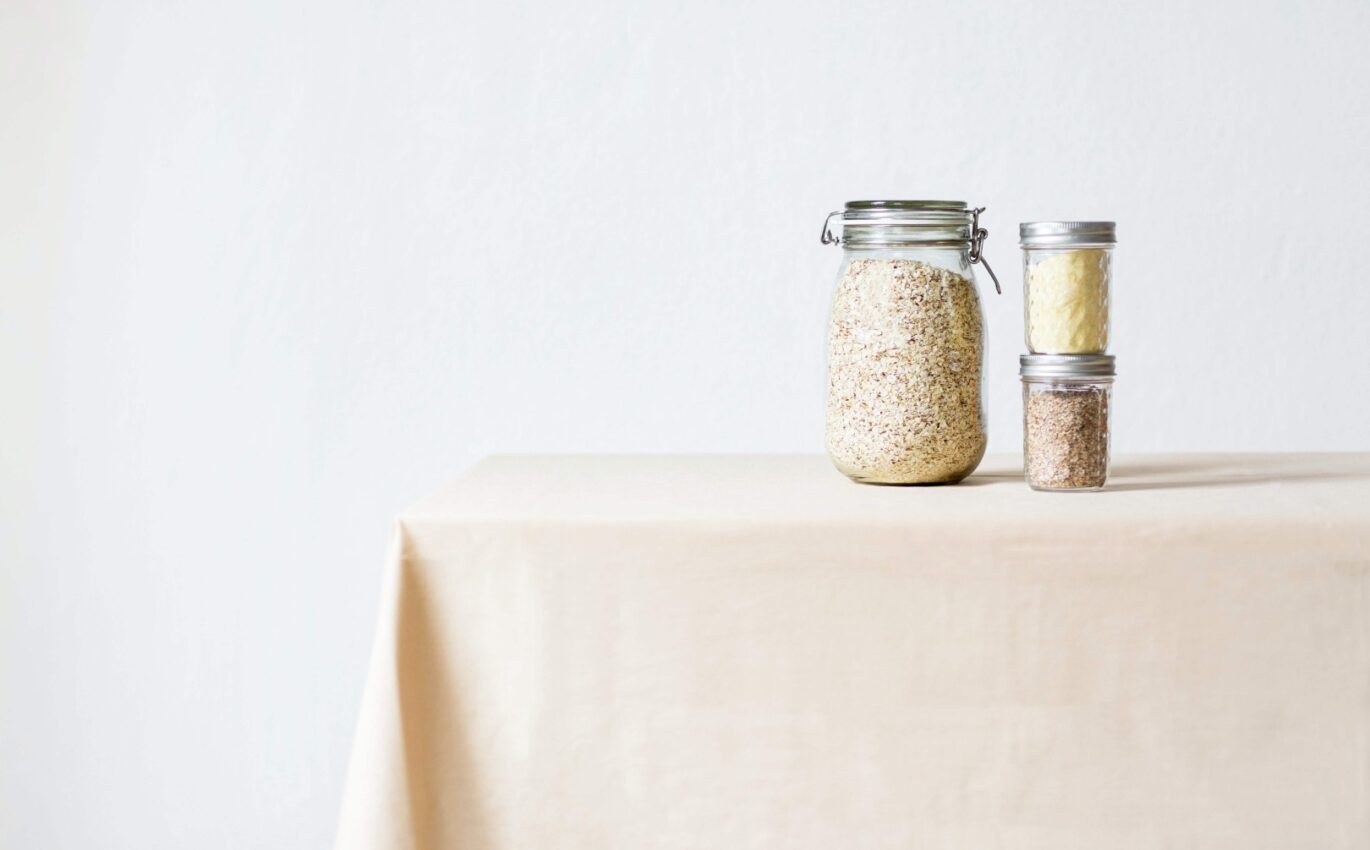“We don’t need a handful of people doing zero waste perfectly,
We need millions of people doing it imperfectly”
ANNE-MARIE BONNEAU, THE ZERO WASTE CHEF
I was putting school supplies away with my older daughter the other day. She was showing me a map of the world that had the Great Pacific Garbage Patch on it. It looked like a massive island, like a new continent.
We talked about the fact that it’s not really an island and the sad reality that it’s more like a cloudy plastic soup. The garbage soup also known as the Pacific trash vortex. Created by ocean currents, it brings together trash, most of it plastic, from far and wide.
She had also learned about the devastating effects to marine life and sea birds and how the micro plastics have even entered the food chain.
It made her proud to know that she was making a difference. Proud that when they spoke about “things to do to help the environment” at school, she was already doing them. With her zero packaging lunches, hand me down clothing shared between multiple families, fundraising bottles drives… She could see that it was worth the effort.
You too can be proud to make a difference. Start now.
3 Easy Steps to reduce your waste:
First, Don’t strive for perfection
Are you feeling overwhelmed by the thought of the zero waste lifestyle? People often feel paralyzed and powerless and take no action. It’s not all or nothing.
Start with the easy stuff. It takes time and every little bit counts. Start with small changes; get used to them, then make more small changes.
No one needs self-improvement benchmarks or resolutions that they can’t achieve. Do the best you can with what you have.
Everyone stumbles, no matter where in journey you are. Much like my daughters in a candy store, the concern of plastic packaging gets forgotten, we’re only human after all.
Second, realize it’s going to take some time
You can’t be expected to change to zero waste overnight. It takes time, figure out what works for you and for where you live. It can take weeks, even months. The goal to zero can take years and that’s ok. You need time to change old habits.
The important part is getting started
Do the best you can with what you have and where you live. Don’t be too hard on yourself. Expect hiccups along the way, it’s all part of the journey.
Avoid comparing yourself to others. It’s not about perfection- we all have our own unique path.
Try with removing a single-use plastic item from your life and get used to it. Then remove another. Before you know it, you will be living a more sustainable lifestyle. Maybe even living plastic free.
Third, Switch from disposables to reusables
Our resources are too precious for disposable junk, stuff that is just trash in transition

Here are some ideas to get you started.
Find something that you’re comfortable with changing, get used to it, then try another.
Enjoy making a difference and enjoy quality reusables.
- Paper bags/ plastic bags – bring your own cloth/tote bag
- Plastic produce bags – bring your own cloth bags. Most fruits and veggies don’t need a bag in your cart or basket. Then store them in reusable containers at home
- Plastic food packaging – Buy in bulk; buy from farmer’s markets; buy from local vendors with reusable containers
- Bottled water – switch a good quality glass or stainless steel water bottle (preferably plastic-free or at least BPA-free) and tap water. If you do not trust tap water, filter or boil it beforehand (you use it for cooking anyway, right?)
- Disposable coffee cups and lids – bring your own mug or stop and enjoy the experience and ask to have it in a ceramic mug
- Plastic cutlery – bamboo, stainless steel or camping utensils
- Plastic straws – bamboo, stainless steel or glass straws. Otherwise, just skip it!
- Disposable cups or plates – reusable cups or plates; sturdy camping ones
- Disposable lunch bags – stainless steel food containers; mason jars, silicone reusable bags or dish towels
- Disposable take-out containers – order in and transfer to your containers: stainless steel food containers, mason jars, bees wax food wrap, silicone reusable bags, dish towels, or take the time to eat in
- Paper napkins – cloth napkins
- Paper towels – microfibre, cotton cloths and reusable paper towels
- Tissues – handkerchiefs (up cycled from old fabric)
- Dish sponge or plastic brush – cotton cloth, wooden brush with natural bristles, loofah or Swedish dish sponge
- Coffee pads/ filter cones – french press/moka pot/reusable coffee filter cones or pads
- Tea bags – loose tea and a tea strainer/ french press
- Tin foil/ cling film – put it in a food container or jar, bees wax food wrap, silicone covers, plate as a lid, or wrap it in a dish towel
- Muffin paper liners – grease your muffin tray/silicone liners
- Baking parchment – grease the cake pan/ silicon mat
- Toothpicks – Stainless toothpicks, turkey lacers
- Cleaning wipes – microfibre or cotton cloth and your homemade vinegar cleaning solution (1/4 cup distilled vinegar + 1 cup of water)
- Trash bags/ bin liners – at some point you might not need those anymore ;), until then go for newspaper origami
- Disposable liquid hand soap bottles – Refills and soap bars
- Disposable shampoo, conditioner or body wash – Refills, shampoo and soap bars; apple cider vinegar hair rinse
- Disposable razors – straight-edge razor, safety razors, electric shaver
- Cotton rounds – washable cotton rounds
- Disposable creams and balms – bars, creams and balms in reusable containers, natural oils, or make make your own
- Deodorant – Reusable holders with refills, deodorant in glass jars or in paper tubes, or alum stone deodorant
- Toothpaste – refills: paste or tablets in glass jars
- Toilet paper – a bottle, water, soap and a washcloth, bidet, Japanese seat or toilet
modified and expanded list from Shia Su’s wasteland rebel blog
Other helpful posts
- The basic zero waste framework and principles
- Consume less but better
- The top 10+ items found on coastal cleanups and how to rid them from your life
- Daily zero waste kit and essentials
- The beginner’s guide to Plastic Free July
- The best stylish and sustainable water bottles
- The best stylish and sustainable razors
- 142 Zero Waste Swaps And Essential Products
- But What Do We Do? Zero Waste for Beginners
If 10,000 people reduce their waste by 10%, that would reduce 10 times more waste, than a 100 people reducing their waste to zero.
In the end, the more people that make small changes the greater the results
The more people that reduce their waste the greater the impact. We need millions of people to reduce their waste bit by bit. Not just a few reducing it to zero. The more people that buy-in, the bigger the results.
“Just because we can’t reach the zero in zero waste. It’s no reason to take zero action”
ANNE-MARIE BONNEAU, THE ZERO WASTE CHEF
Final thought: individual actions do matter but the system needs to change as well. We need both

“If you think you are too small to make a difference…try sleeping with a mosquito in the room”
DALAI LAMA
An individual’s actions can have a ripple effect, they can be far reaching and make a real difference. Ripples turn into waves and before you know it, the growing swell leads to a better world.
There is a growing movement that was started by individuals. They are coming together to say that our natural resources are too precious for disposable junk.
We have direct influence with our choices. We send a message in every direction and this puts pressure on the system to change. Do it for the planet, do it for your family, do it for kids and future generations.
Consider that some individual’s footprint is much lager than others. Reducing the footprint of the wealthiest could have the largest impact.
It has been calculated that the richest 1% are responsible for more than twice as much carbon pollution as the 3.1 billion people who made up the poorest half of humanity
Fortunately, some are waking up to this reality. True leaders in government and industry have the power to make a difference. True leaders are making a difference.
Bring your friends, bring a positive attitude and lead by example. Demand better from the system, the government, from industry, from businesses and from products.
Speak up and expect more. Consume less, but better. Consider that for products, its’ impact is determined in the design phase. Waste is a design flaw after all.
Remember that we’re all in this together. Being judgemental or righteous isn’t going to create the right kind of ripples. Turn positive ripples into waves, waves into swells and swells into a movement for change.
Get started with the 3 easy steps. Waste is all you have to loose.
Please share on your socials or even better subscribe below for regular updates. Thanks for reading,
Pat
Pat is a Ski Patroller/Avalanche Technician with a keen interest in design and sustainable living due to a longtime passion for the outdoors. Seeing glaciers melt, seasons change, summer skies full of smoke and beach pollution first hand, motivate him to make a difference.
As Yvon Chouinard Founder of Patagonia says “If you are not part of the solution, you are still part of the problem”.

